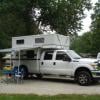Hey guys,
How's everyone doing?
I'm the proud new owner of a Fleet that was installed on Monday. I've been reading up on forums, the user manual, and all over the internet in order to educate myself as much as possible and to avoid paying unnecessary idiot tax.
An area where I continue to get lost is battery management. As I've sifted through the information, the answers are so granular that I'm having a hard time grasping the larger concept. If anyone can explain in layman's terms, or their personal approach, it would be appreciated greatly.
My goal is to know how to use my FWC properly so I don't kill my batteries and understand the relationship between my 160 watt solar panel and 2 battery set up (Exide group 24, 75ah x2).
Some specific questions are as follows:
- Does the Zamp Solar Controller act as a tri-metric battery monitor as well as monitoring the solar data?
- Can you explain the relationship between Volts, Amp and Amp/hours in general?
- During the day, the zamp controller shows various values for Volts, Amps and Amp/hours. Are the values instantaneous values of what is happening at that moment. Do volts indicate the current state the batteries are in?
- Should I be weary of running the fridge (85L) too long?
Again, thanks so much for the advice.
Best,
Adam B




















